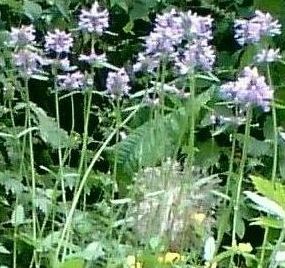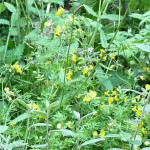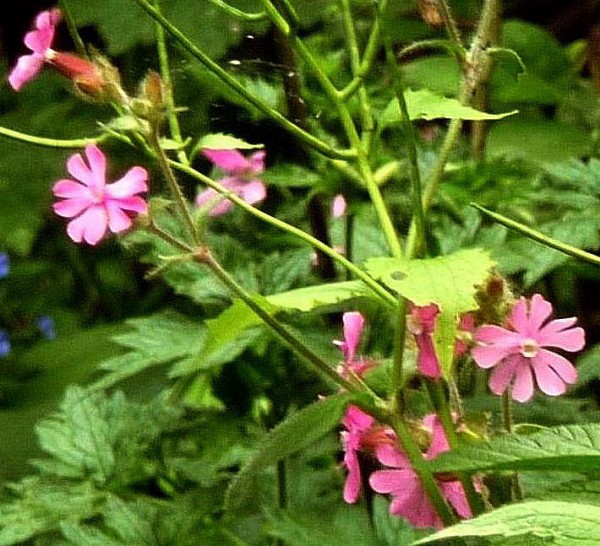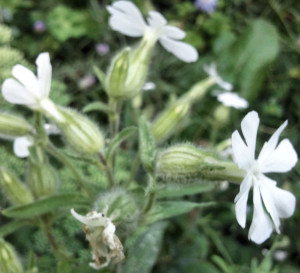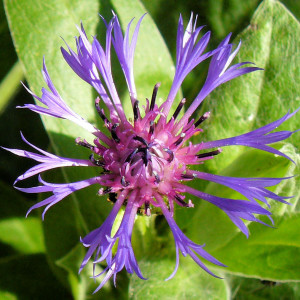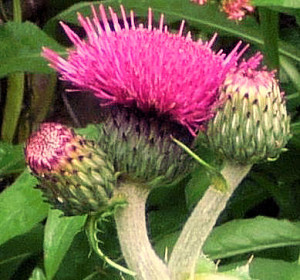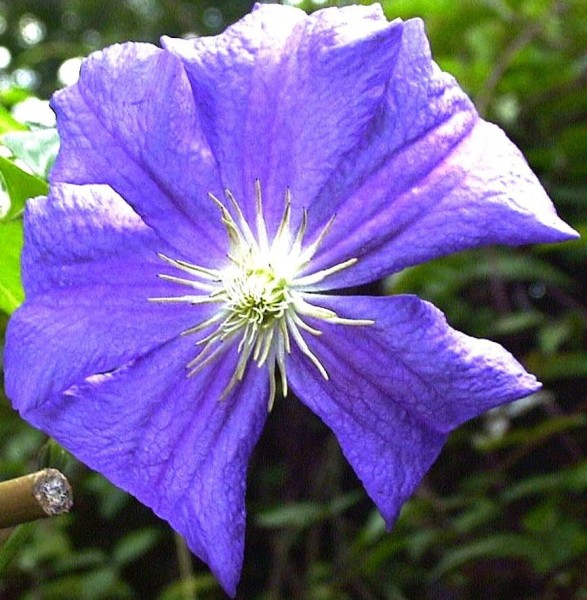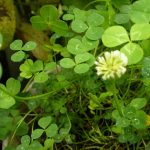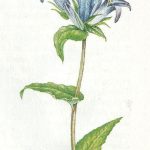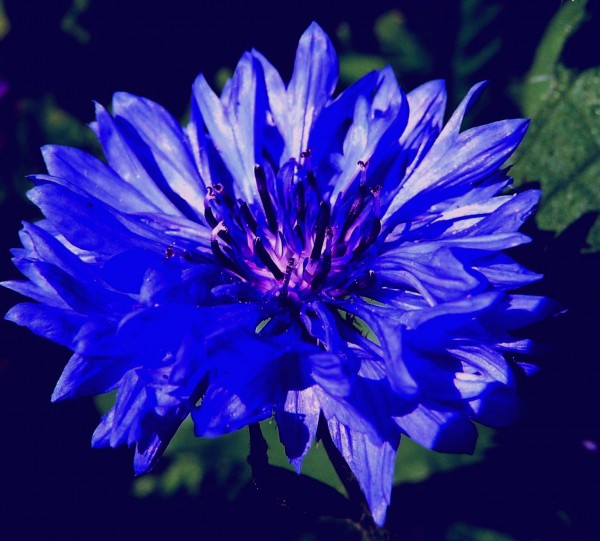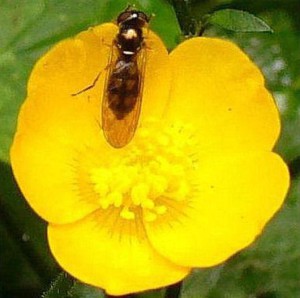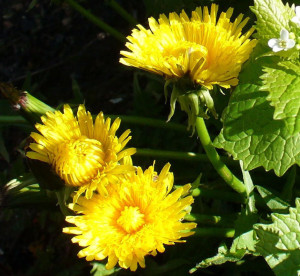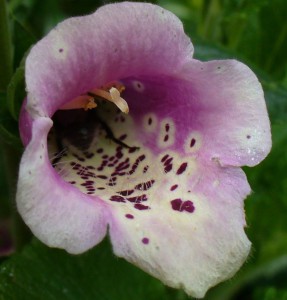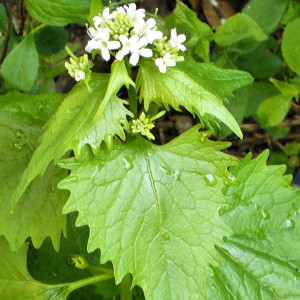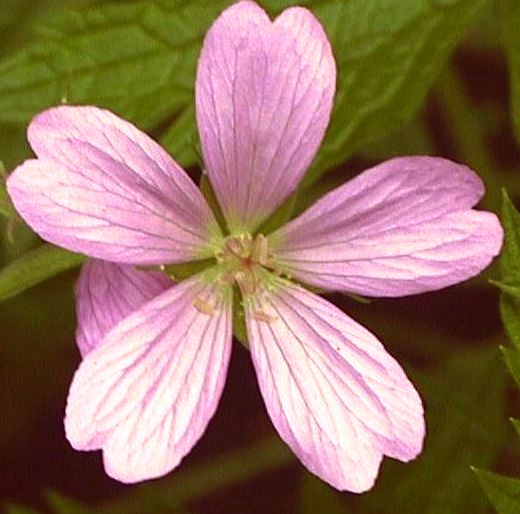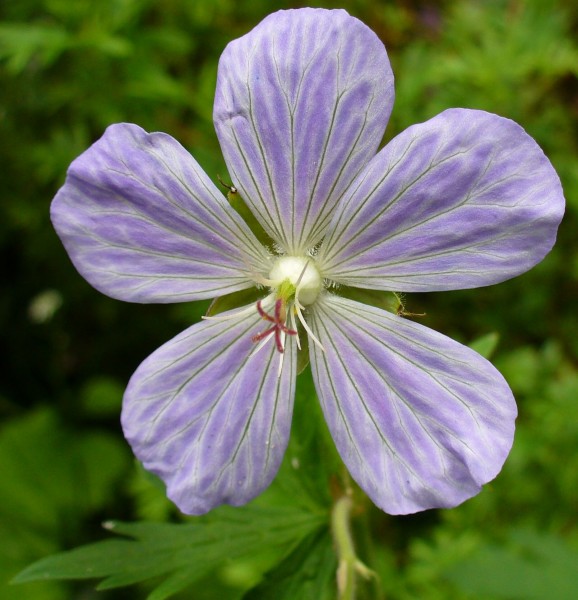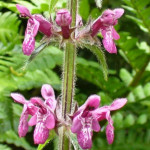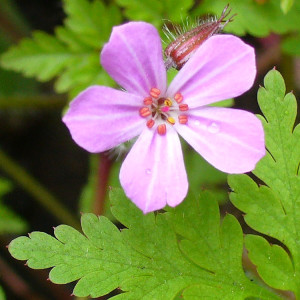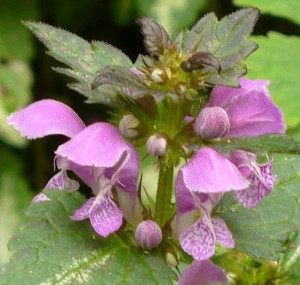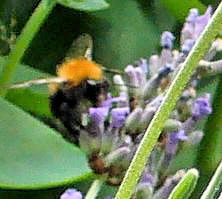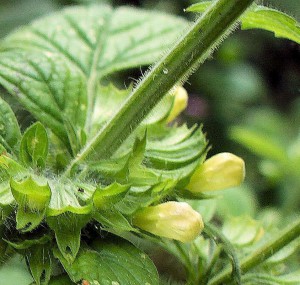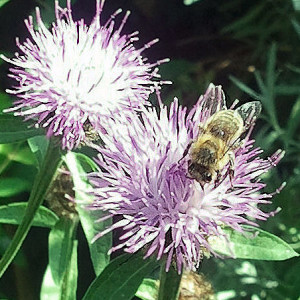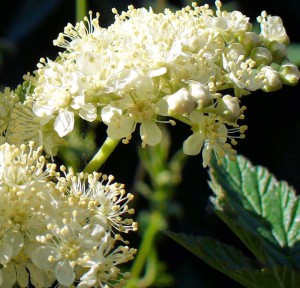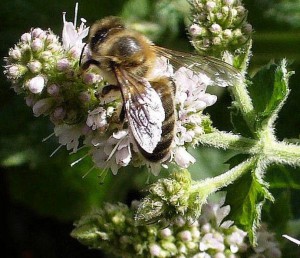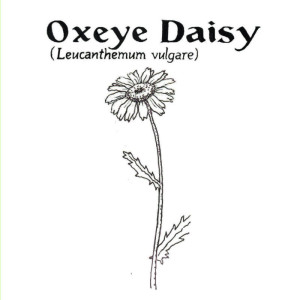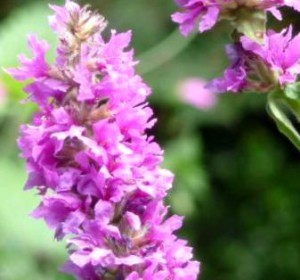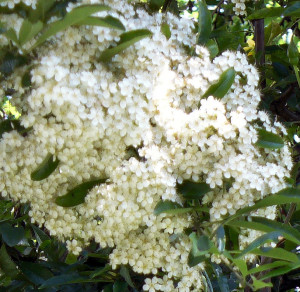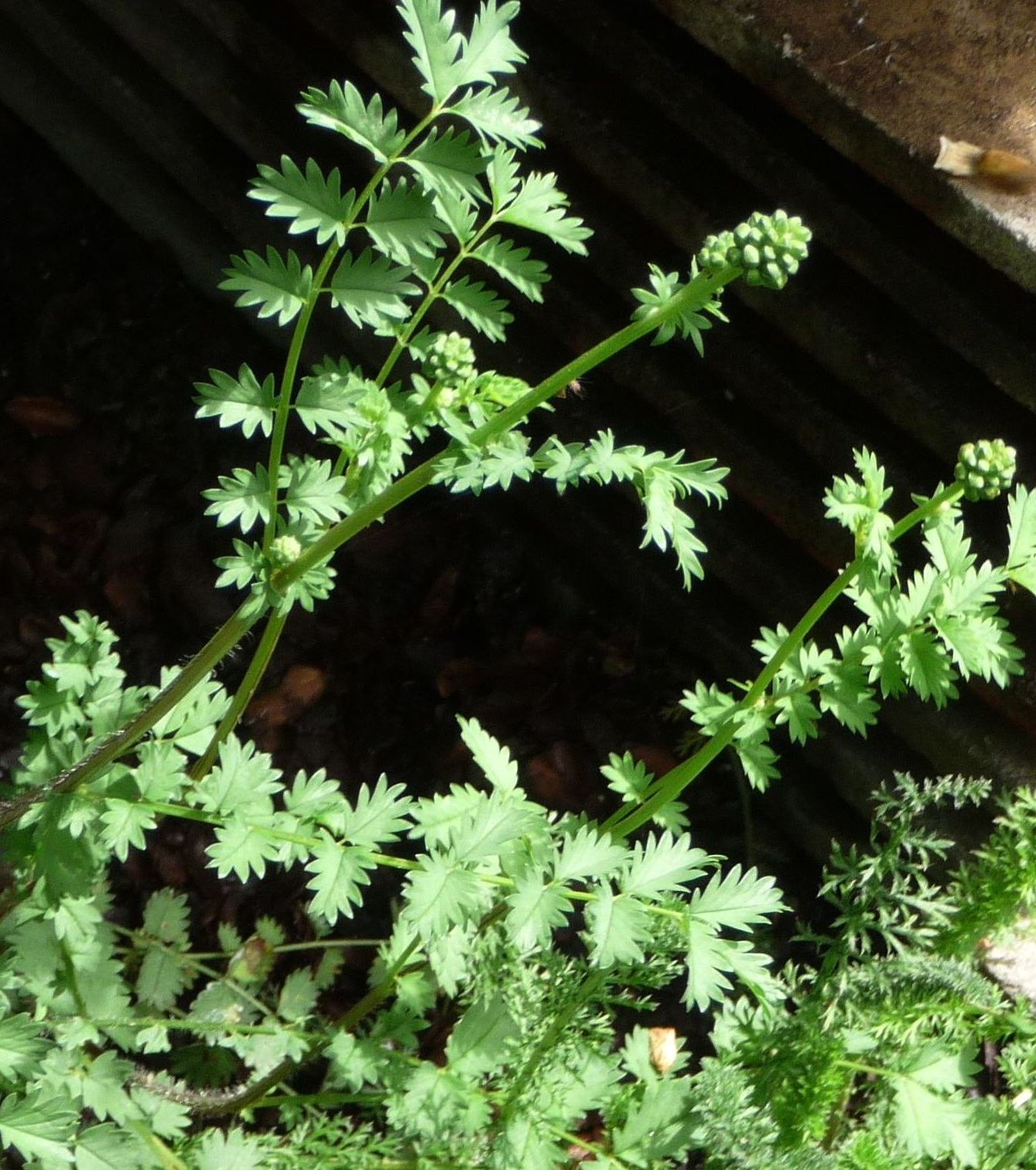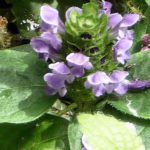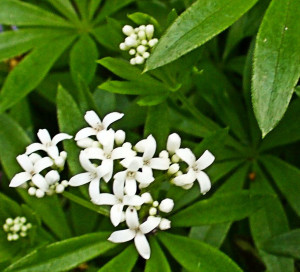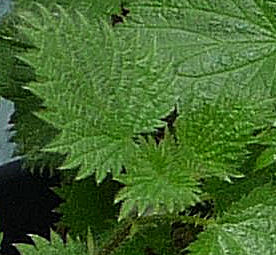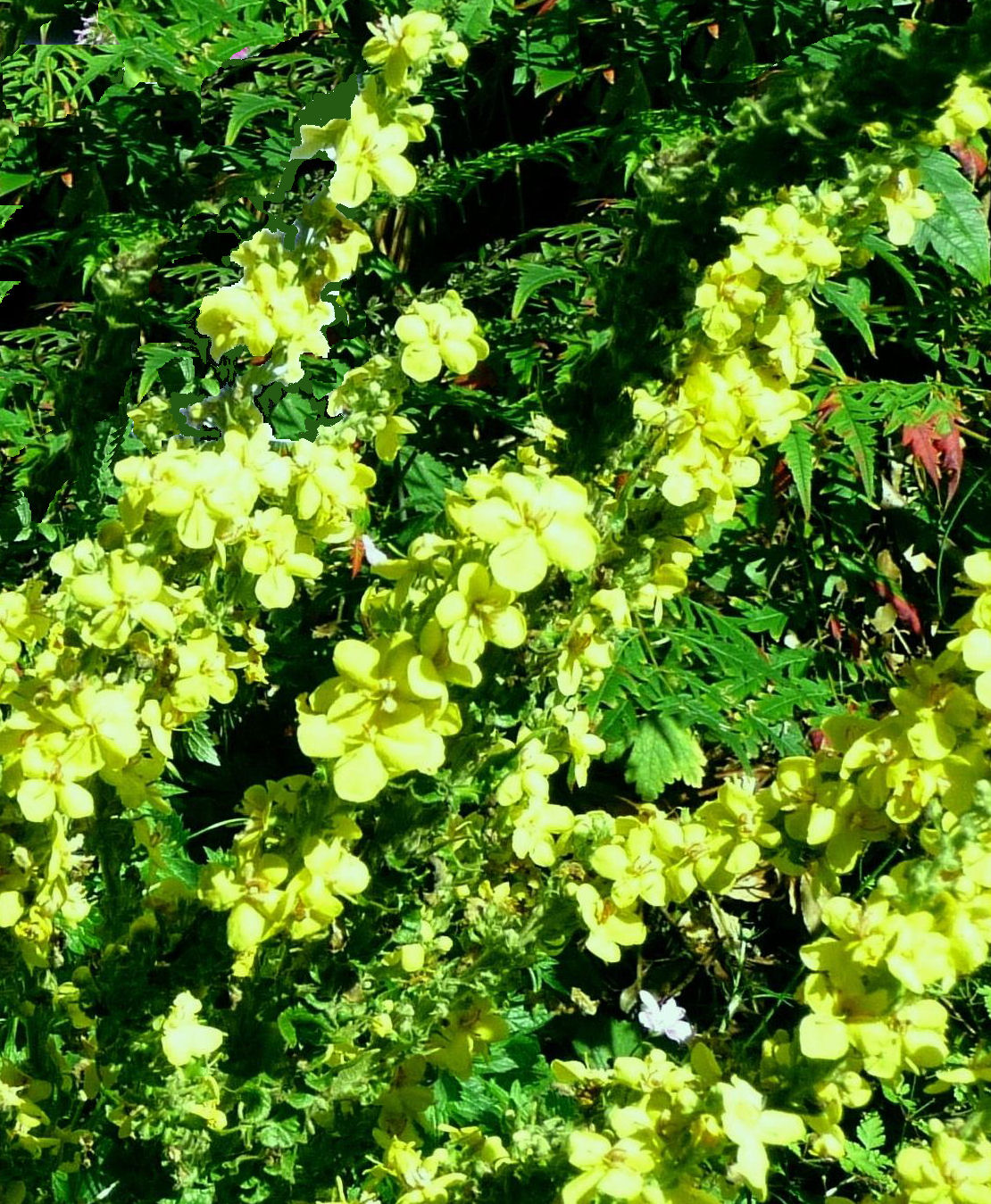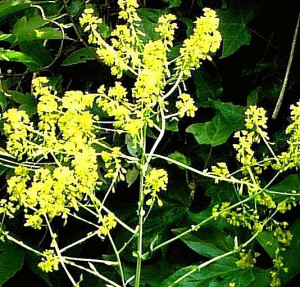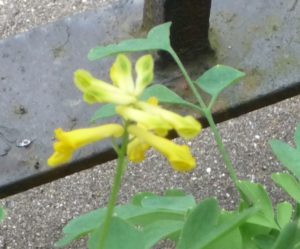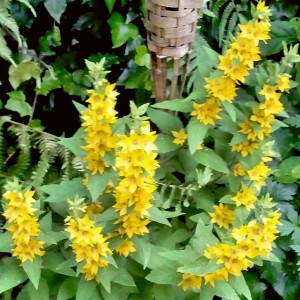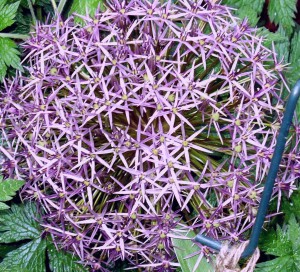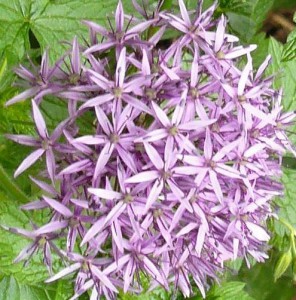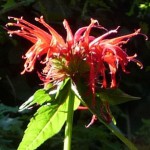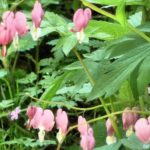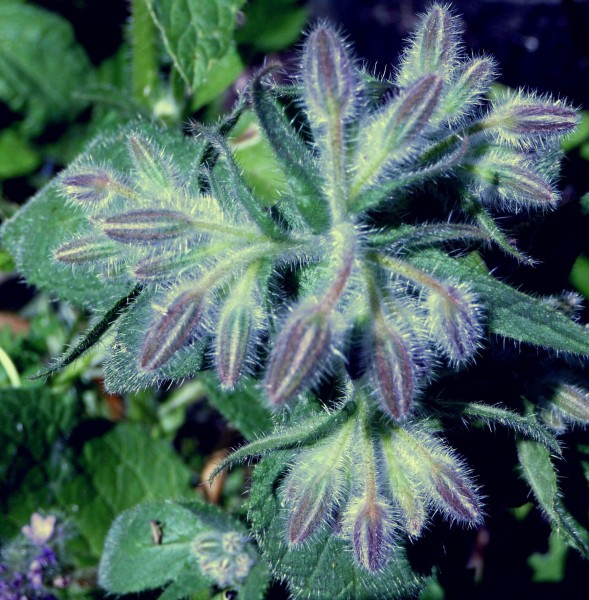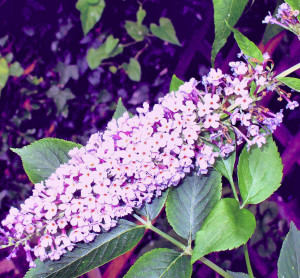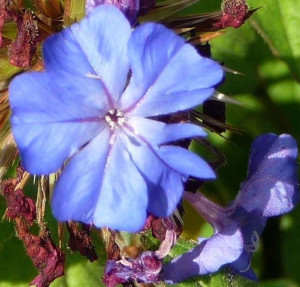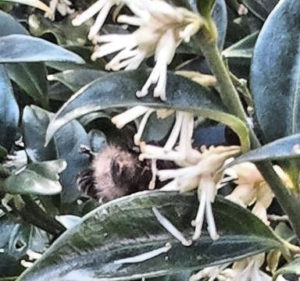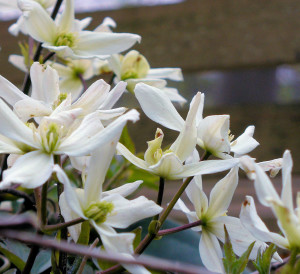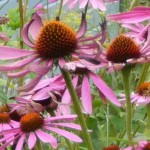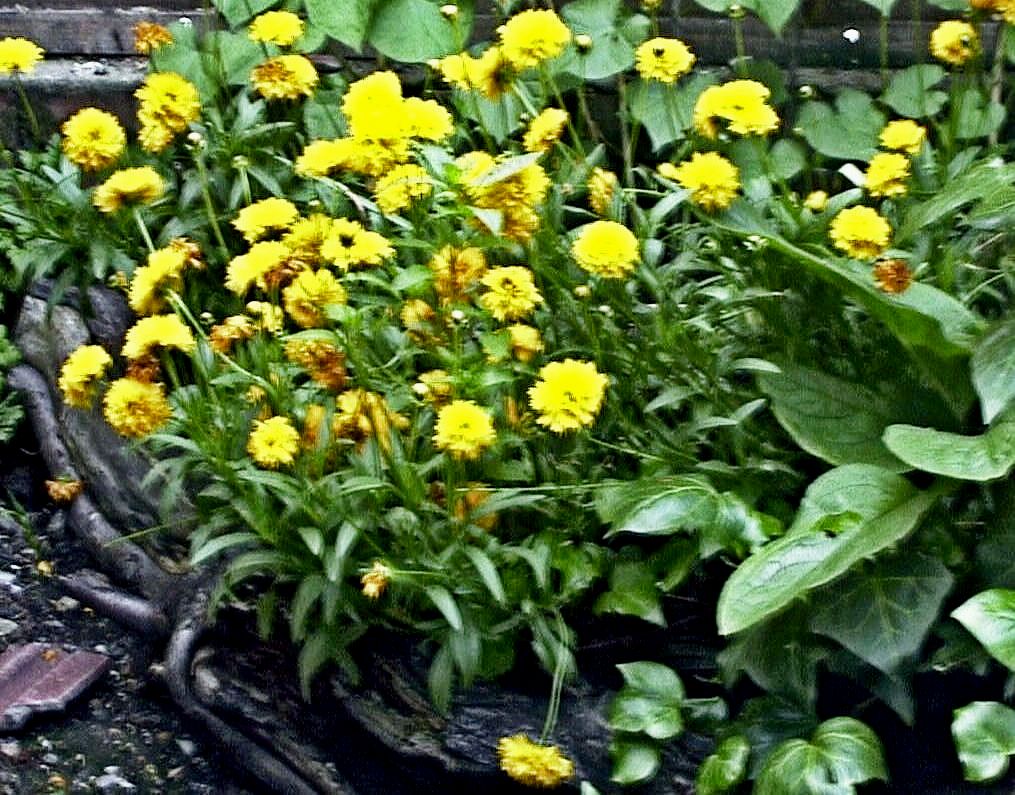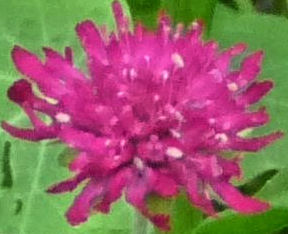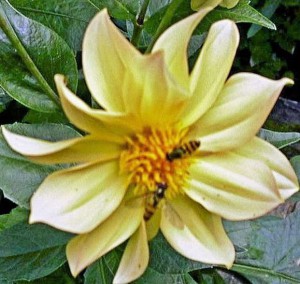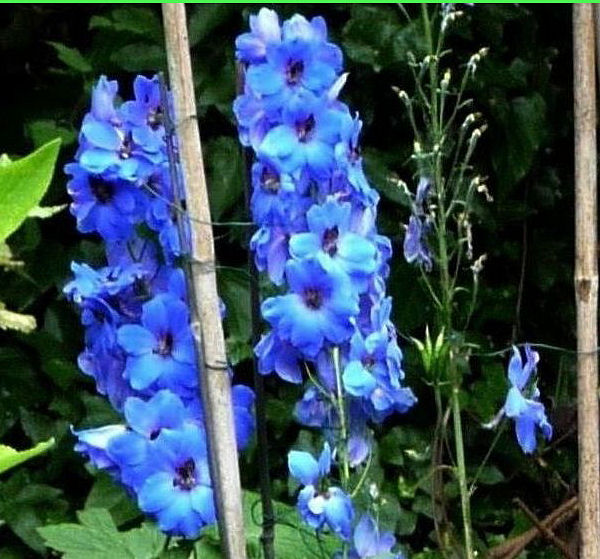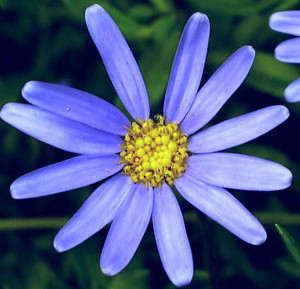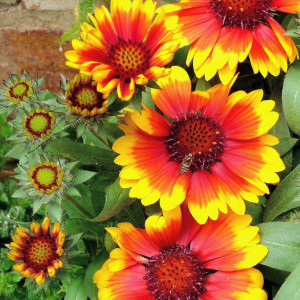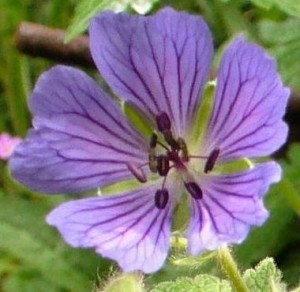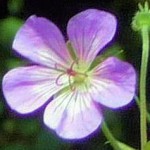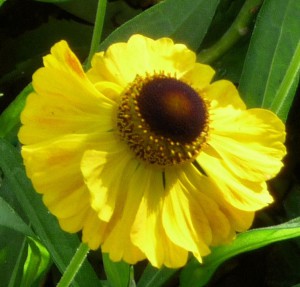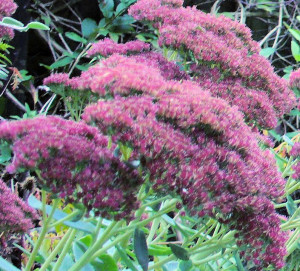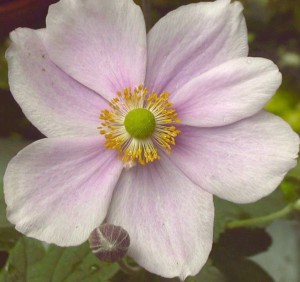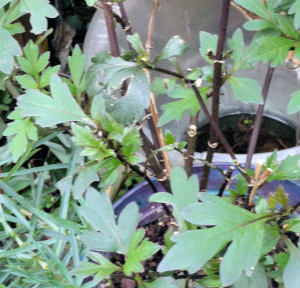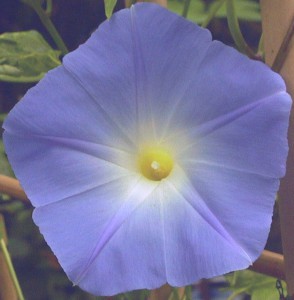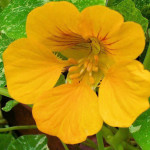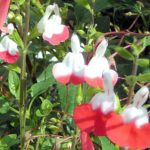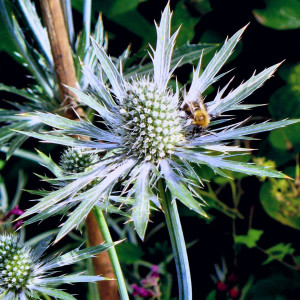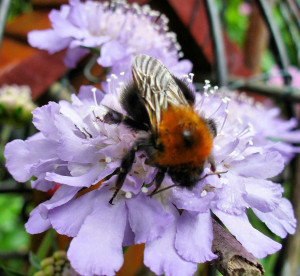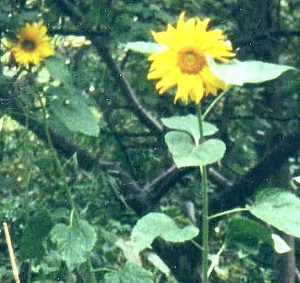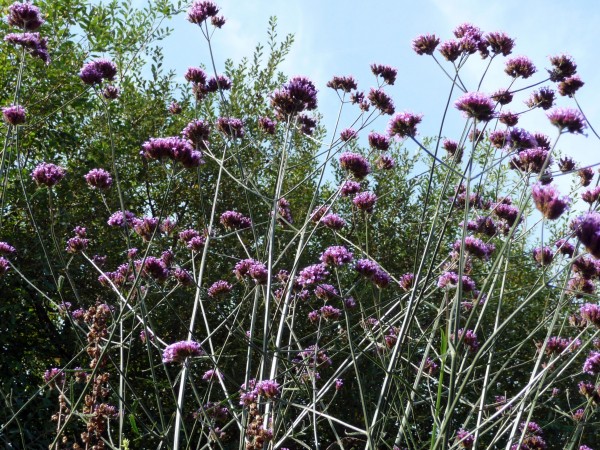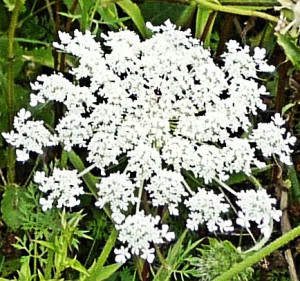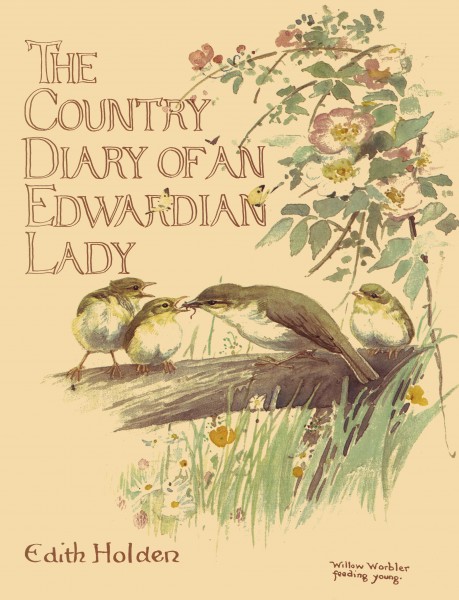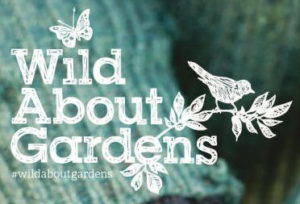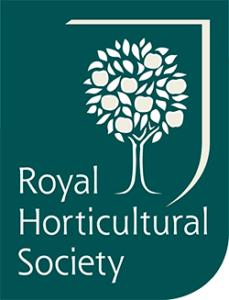We try to make space for as many bee-friendly flowers as possible in our North London garden. Both native wildflowers & internationals have done well here for bees & other pollinators.
Each page looks at one of the flowers we have grown here – some have only survived for a season; others are legendary wildflowers with many tales to tell.
We hope you may be inspired by those who have inspired us, & find yourself wanting to grow a plant, or learn more about it – from a book, a website, a wildlife charity, an author… There are photos, stories, medicinal uses, websites, links & books you can go to for further info.
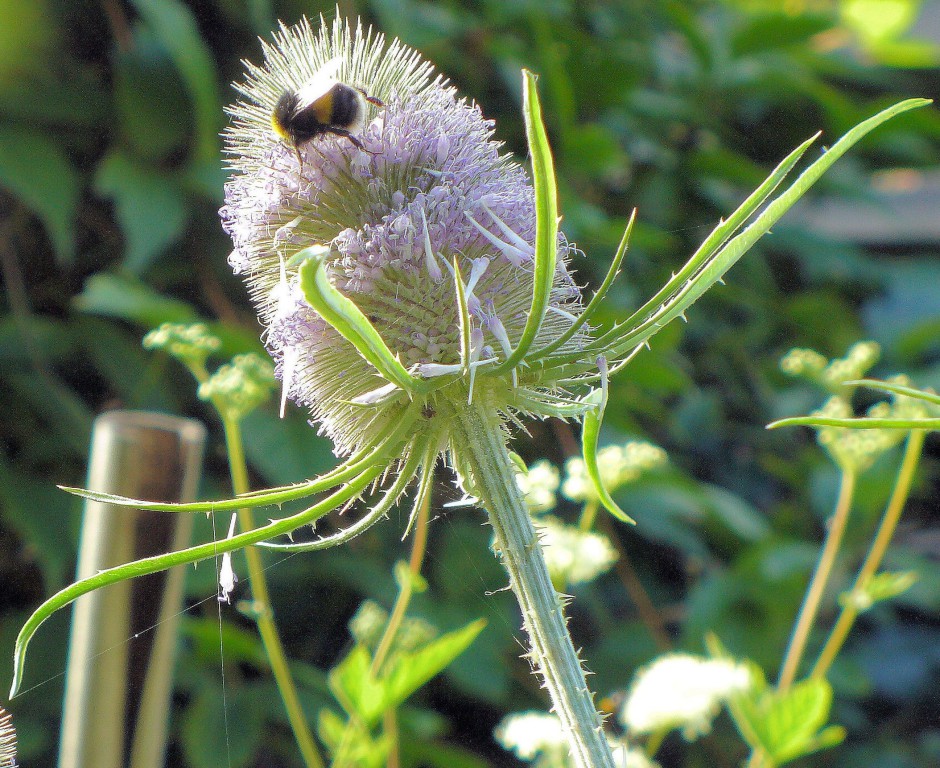 Bumblebee on Teasel
Bumblebee on Teasel
Scroll down to bottom of page for selected reading list and websites.
Some UK wildflowers may have one or more common names, acquired over centuries. They may be known by other names in different parts of the country. A British wildflower may also be a European native, & be called something else abroad. Using a plant’s Latin name helps to avoid confusion.
Part of the pleasure of growing a native wildflower is knowing it has lived a life & earned itself a reputation, & perhaps a folkname or two. It is worth knowing some of these folknames. When someone asks you ‘Which flower is that?’ you can answer ‘Kiss Me Quick’, or ‘Hardheads’.
CLICK YOUR MOUSE ON A FLOWER NAME OR IMAGE FOR MORE …
Many native wildflowers bloom for only a few months. A wildlife-friendly garden should aim to provide pollen and nectar for as many months as possible for bees, butterflies, hoverflies and other insects. Choosing plants from elsewhere on the planet, with flowering times earlier or later than our natives, can help to make your garden worth a pollinator’s visit for most of the year.
These plants, native to countries beyond Europe, have done well (with a few exceptions) for North London bees and other insects over the last twenty years:
CLICK YOUR MOUSE ON A FLOWER NAME OR IMAGE FOR MORE …
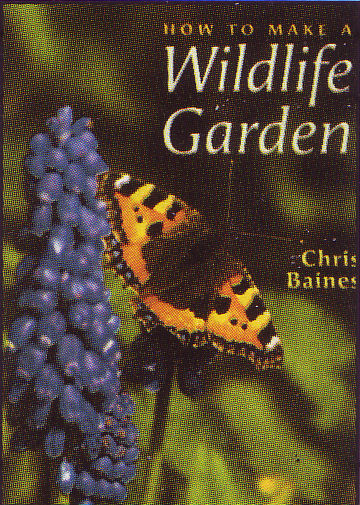 HOW TO MAKE A WILDLIFE GARDEN, by Chris Baines, Frances Lincoln Ltd (revised edition), copyright 1985. First published by Elm Tree Books/Hamish Hamilton, 2000.
HOW TO MAKE A WILDLIFE GARDEN, by Chris Baines, Frances Lincoln Ltd (revised edition), copyright 1985. First published by Elm Tree Books/Hamish Hamilton, 2000.
This book was recommended to me by Wildlife Rangers at the Ecology Centre. It is based on Chris Baines’ wildflower garden for 1985’s Chelsea Flower Show (the first wildflower garden ever at Chelsea) & a TV programme, ‘Bluetits and Bumblebees’. It is filled with ideas; its author’s warmth & enthusiasm come through on every page.
There are chapters on wildflower meadows, garden ponds, climber-covered screens & cottage garden service stations. Flowers, native & ‘garden border’, are grouped by colour, height & flowering times, with tales of how wildlife uses each one. You can delve into this book in the dead of winter & find inspiration for the season to come. Look up Chris Baines on the web & read about his ongoing environmental work, including water sustainability at the Athletes’ Village, London 2012.
P.18 – ‘ If you adopt the accepted practices of twentieth century gardening, then you will be planting exotic shrubs and fowers, and generally putting the local wildlife under exactly the same kind of hostile pressure that has done so much harm in the countryside. Try a more sensitive approach. See how many things you can persuade to live in your garden, instead of notching up more and more things to kill.’
Thanks to television, radio & the internet, it is easier now to find wildlife expertise than it was in 1985. But this book is as relevant today as it was then. You will not regret bringing it into your life & letting its ideas influence you and your garden.
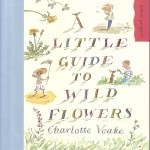 A LITTLE GUIDE TO WILD FLOWERS by Charlotte Voake Text by Kate Petty
A LITTLE GUIDE TO WILD FLOWERS by Charlotte Voake Text by Kate Petty
Published in Great Britain by Eden Project Books, 2007 Imprint, Transworld Publishers Div. of the Random House Group Ltd. www.kidsatrandomhouse.co.uk * www.edenproject.com
In this little book, award-winning children’s book illustrator Charlotte Voake has illustrated each native wildflower with a tale of where it grows, when it flowers & how it got its name. Has it fed, healed or poisoned us? Birds, animals, insects & children appear throughout.
The selection of native plants includes Chickweed, Milkwort & Shepherd’s Purse, all small & easily overlooked by many of us. Pages at the back are left blank ( ‘My Wild-Flower Scrapbook’ ) for drawings, paintings or photos of wildflowers: ‘Make sure you date all your entries – this could be a useful document one day!’
The Eden Project brings plants & people together. It is dedicated to developing a greater understanding of our shared global garden, encouraging us to respect plants – and to protect them.
 NATURE’S FORGOTTEN FOLKLORE: Myths and Magic in Islington
NATURE’S FORGOTTEN FOLKLORE: Myths and Magic in Islington
* Richard Meyers *
In this booklet for Islington Council, Conservation Ranger Richard Meyers collects some of the stories, folknames & legends surrounding our local wildlife. There are traditions from a rural way of life before the industrial revolution, & tales from other countries who share some of our flora and fauna.
Those who joined Richard on his guided walks or worked with him & the team for a Volunteer Day will have heard these and other stories. This booklet, in his words, merely scratches the surface.
Islington Ecology Centre, 191 Drayton Park, London N5 1PH
THE POLLINATOR GARDEN . http://www.foxleas.com/ . 2006-2016
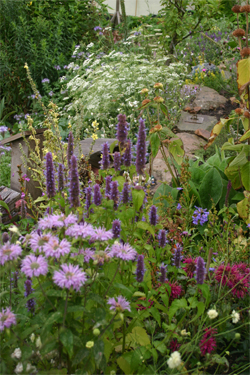
Marc Carlton’s 2010 cottage garden pollinator border, designed to attract wild bees & hoverflies.
Naturalist & gardener Marc Carlton based this website on the garden he created in S London. He now lives & gardens in Chepstow, between Wales & Shropshire. The website is meant to be downloaded & used in a not-for-profit way.
Create your own pollinator garden. Information includes: Choosing a sunny site; Creating shelter from prevailing cold wind; Grouping flowers of the same kind in large drifts; Planning for a succession of flowers throughout the whole growing season; Minimising or avoiding the use of pesticides.
* How insects feed from flowers
* A planting list for pollinators
* The basics of nature-friendly gardening
* Garden meadows
* Recommended reading lists
* Links to helpful sites
* Nature gardens in Holland and Germany, & a North American page for readers in the USA/Canada
Marc’s pollinator garden principles:
“The UK is nothing more than a peninsula of Europe, and has only been separated for some 8,000 years, after a brief post-glacial period of recolonisation across the north sea land bridge. Our flora is a shared subset of that of western Europe, as is our insect fauna. I choose western Europe as the main region of origin of plants for my pollinator border.”
“My second principle is to concentrate on flower forms which are close to nature, so no double flowers, complex hybrids or horticultural novelties.”
The website for the LONDON BEEKEEPERS ASSOCIATION, www.lbka.org.uk/ has information on urban beekeeping, purchasing bees, & a list of recommended pollinator plants.
“If you’re looking for our details on window box planting, you can find them here. The LBKA has an active programme of helping plants in a way that benefits bees and pollinating insects. We work with academics, ecologists, councils and park authorities and our pollinator friendly seed mix is distributed free at events thanks to our sponsor, Ashurst.

Bees and other pollinators need the right type of flowers to obtain pollen (protein) and nectar (carbohydrate). London has a lot of parks and gardens and the long flowering season of its diverse plants gives London’s honey its characteristic complex taste. However, the planting policies of parks and the flowers people choose to grow are not necessarily good for bees… it is increasingly important that we ensure enough forage and diversity of forage to keep London’s pollinating insects alive and healthy for the entire season.”
Honeybees visiting our Highbury garden were coming, we found, from a beehive one street away. We read the interview with its beekeeper, Peter Buckoke, in Nicola Baird’s entertaining Islington Faces blog, and got a few jars of Peter’s lovely Finsbury Park Honey from Bumblebee Natural Foods in Camden. He has since expanded, & now also has hives in Gillespie Park.
PLANT-LORE is an Archive of traditional tales, legends, local plant names, sayings, riddles & herbal remedies. The Compiler of the Archive, Roy Vickery, is a botanist, lecturer & author born in rural Dorset but now living in South London.
The Compiler is available for walks and talks.
“Roy is an experienced lecturer on plant folklore, & is also available to lead walks on the uses and folklore of plants – you provide the weed patch or the hedgerow, he will do the rest. As such events are considered to be important opportunities for collecting new material they are usually given free of charge in the Greater London area, & with only a charge to cover transport elsewhere.
The walks, which rarely cover long distances, can take place anywhere where there is a variety of common plants – churchyards and cemeteries, parks and commons, and even, providing they are not too busy, pavements.”
Roy Vickery welcomes information on plants from all parts of the British Isles, ethnic groups settled there, & comparative material from overseas, no matter how widespread & well-known you consider it to be. A copy of all material received will eventually be placed in the care of the library of The Natural History Museum. See website for details.
www.plant–lore.com/ PLANT-LORE . Collecting the folklore and uses of plants
VICKERY’S FOLK FLORA An A-Z of the Folklore and Uses of British and Irish Plants, London: Weidenfeld & Nicolson, 2019. A greatly expanded version of the 1995 Dictionary of Plant-lore, with illustrations, increased information on local names, & an attempt to try & record when & where beliefs & practices occurred. Vickery’s Folk Flora was short-listed for the 2019 Katharine Briggs Folklore Award.
Roy Vickery, 9 Terrapin Court, Terrapin Road, London SW17 8QW.
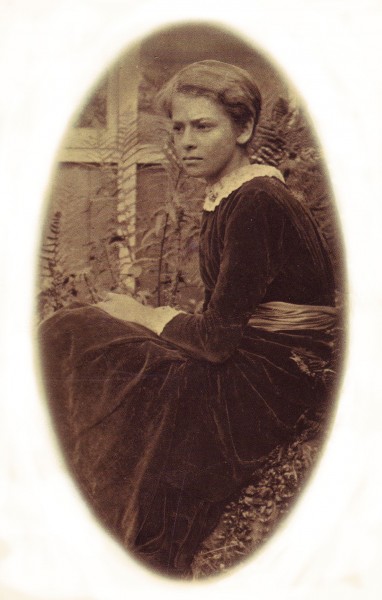 THE COUNTRY DIARY OF AN EDWARDIAN LADY, published by Michael Joseph in 1977, was created by naturalist, illustrator & art teacher EDITH HOLDEN in 1905-06.
THE COUNTRY DIARY OF AN EDWARDIAN LADY, published by Michael Joseph in 1977, was created by naturalist, illustrator & art teacher EDITH HOLDEN in 1905-06.
Edith painted the wildflowers, birds & other wildlife she saw, walking or cycling through countryside around her home in Orton, Warwickshire. The book moves through the seasons, pages filled with botanical paintings, country traditions, poems, the weather…
Cycling was popular; many women, laced into the tight corsets & long dresses of the Victorian era, now chose to wear ‘rational dress’, such as loose-fitting trousers (knickerbockers) for cycling. Some men objected. Only eight years earlier, male students at Cambridge had hanged a woman riding a bicycle, in effigy, to protest the admission of women to the college. It is our good fortune that Edith Holden was able to cycle into the countryside & record what she saw there. In this book we see it as it was a century ago, through her eyes.
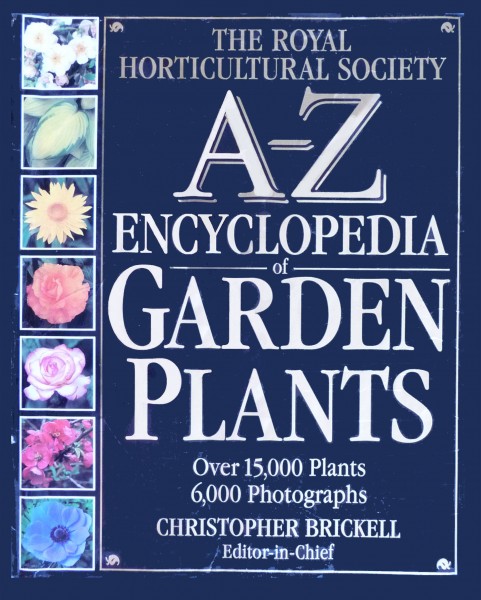 The Royal Horticultural Society A-Z ENCYCLOPEDIA OF GARDEN PLANTS was the book most used by our class at Capel Manor in 1999. Each plant’s entry includes both its Latin and English names, its country of origin, the height & width it attains in favourable conditions, details of those conditions (soil type, sun or shade, & so on) & pests or diseases to which it may succumb. There may be an updated version of it by now.
The Royal Horticultural Society A-Z ENCYCLOPEDIA OF GARDEN PLANTS was the book most used by our class at Capel Manor in 1999. Each plant’s entry includes both its Latin and English names, its country of origin, the height & width it attains in favourable conditions, details of those conditions (soil type, sun or shade, & so on) & pests or diseases to which it may succumb. There may be an updated version of it by now.
TheRHS website has advice on individual plants, gardens to visit, events, courses, shows, gardening jobs to be doing now & how to join The RHS.
WILD ABOUT GARDENS (www.wildaboutgardens.org.uk/)
